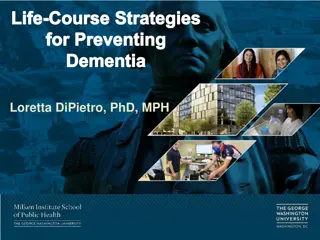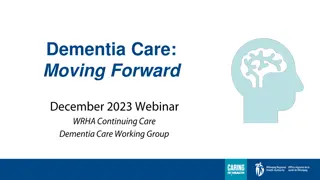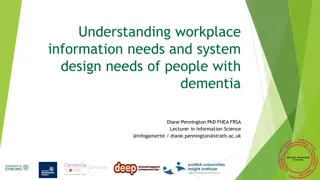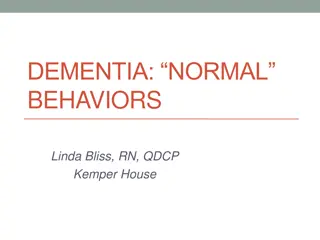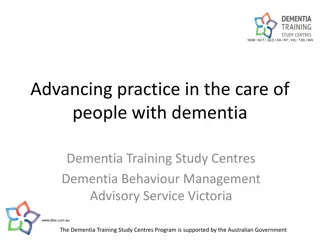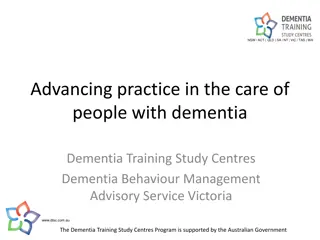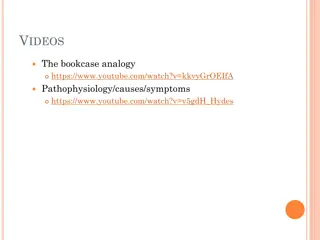Quality Improvement Strategies for Dementia Care Enhancement
Explore the importance of improvement initiatives in dementia care through SWOT analysis, experience sharing, and fundamental concepts. Discover why adaptability is key to survival and how quality improvement differs from research and performance. Learn about executing QI ideas, the Model for Improvement, PDSA testing, and iterative testing for effective change implementation.
Download Presentation

Please find below an Image/Link to download the presentation.
The content on the website is provided AS IS for your information and personal use only. It may not be sold, licensed, or shared on other websites without obtaining consent from the author. Download presentation by click this link. If you encounter any issues during the download, it is possible that the publisher has removed the file from their server.
E N D
Presentation Transcript
SWOT Analysis Michelle Miller Lynn Flannigan Focus on Dementia
Improvement Fundamentals Michelle Miller Team Lead: Focus on Dementia
Why do we need improvement? It is not the strongest of the species that survive, nor the most intelligent that survives. It is the one that is most adaptable to change. Charles Darwin
Differences between Quality Improvement, Performance and Research
Having the Will (desire) to change the current state for a better one Will QI Ideas Execution Being able to execute the ideas, applying quality improvement theories, tools and techniques Developing ideas that will contribute to achieve a better state
The Model for Improvement Lynn Flannigan National AHP Clinical Lead/Improvement Advisor Focus on Dementia
By the End of This Session you Will Understand PDSA testing. Understand how having a theory and making a prediction aid learning. See how to collect real time measurement. Appreciate the opportunity of collaborative learning.
How does it Work? What is my theory? What is my prediction? Move my theory into action. Iterative testing with learning cycles which allows you to adapt and retest with increasing degree of belief your changes will work in the local context. Provided assurance it is the right change before implementing to the system
What to Measure? Outcome Measures How does the system impact the values of patients, their health and wellbeing? What are impacts on other stakeholders such as payers, employees, or the community? Process Measures Are the parts/steps in the system performing as planned? Are we on track in our efforts to improve the system? Balancing Measures (looking at a system from different directions/dimensions) Are changes designed to improve one part of the system causing new problems in other parts of the system?
What is so Useful about Testing before Implementation? Trying and adapting knowledge on a small scale Learning what works in your system Change is not permanent Failure is useful, even expected Fewer people impacted
The Mr Potato Head Challenge Aim: To efficiently and effectively provide reliable care to Mr Potato Head (ie put him back together quickly and have him match the picture !)
At your table, select four people to fill the roles of: Master carer to put Mr Potato Head together again Record keeper take record progress Time keeper to accurately record time Accuracy inspector to see how well Mr Potato Head has been put together
Accuracy 3 All pieces on Mr P & positioned correctly 2 All pieces on Mr P, but one or more is out of place 1 One or more pieces are not on Mr P. PDSA Measures Time Start: When time keeper says go. Stop: when carer indicates last piece is in place AND removes hand.
Key Points Knowledge, understanding and belief aregained through testing . Tests should be small,rapid and sequential. Theoryand prediction before every test, and review, in comparison to results, following the test is essential. Learning from other teams can speed up learning and understanding. Measurement does not have to be hard and aids learning.



